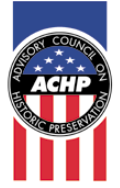
Lander Trail
New Fork River Crossing
Historical Park







© Sublette County Historical Society 2016


GENERAL INFORMATION
The Lander Trail-New Fork River Crossing Historical Park is open to the public during the summer. It offers over 100 acres along the west side of the New Fork River. Access is walk-in only. No overnight camping. Special arrangements can be made for events and group functions using the administrative area. There is no charge for admittance to the Park.


HOW YOU CAN HELP
We welcome volunteers and anyone who would like to help with the Park in any way. There are opportunities for trail construction and maintenance, interpretive guides, general maintenance. All work is done by volunteers. Please contact the Sublette County Hitorical Society at the Museum of the Mountain Man in Pinedale, 307-367-4101.


HISTORY
In the 1850s, Congress looked to facilitate the western movement of people across the country and allocated money for the building of a federal road from Missouri to California across the middle region. Frederick Lander led a crew that constructed this portion, which was heavily used for ten years, until the Transcontinental Railroad was built.
The parking lot is typically open March to December, depending on the weather. Day use only. Walk-in foot traffic welcome during months parking lot is closed off.



Self-Guided Walking Tour
Open Summer
to late Fall
Step Back In Time . . .


Sublette County Historical Society, 307-367-4101, PO Box 909, Pinedale, Wyoming, 82941
info@newforkpark.org









The New Fork River Crossing Historical Park has been selected
by the Advisory Council for Historic Preservation (ACHP) as one of
their “106 Success Stories.” The Advisory Council on Historic
Preservation is preparing to celebrate the 50th anniversary of the
National Historic Preservation Act (NHPA) in 2016. As part of this
celebration they are choosing 106 projects, “106 Success Stories”,
that illustrate how Section 106 of the National Historic
Preservation Act (NHPA) has been used to engage people in the
discussion about protecting historic properties that matter most to
them. These stories will provide examples of how federal agencies
have used the Section 106 process to protect historic properties,
improve federal planning, and raise awareness of the benefits of
historic preservation. The Advisory Council on Historic
Preservation (ACHP) is an independent federal agency that
promotes the preservation, enhancement, and productive use of
our nation's historic resources, and advises the President and
Congress on national historic preservation policy. Click here for
more information: www.achp.gov

















